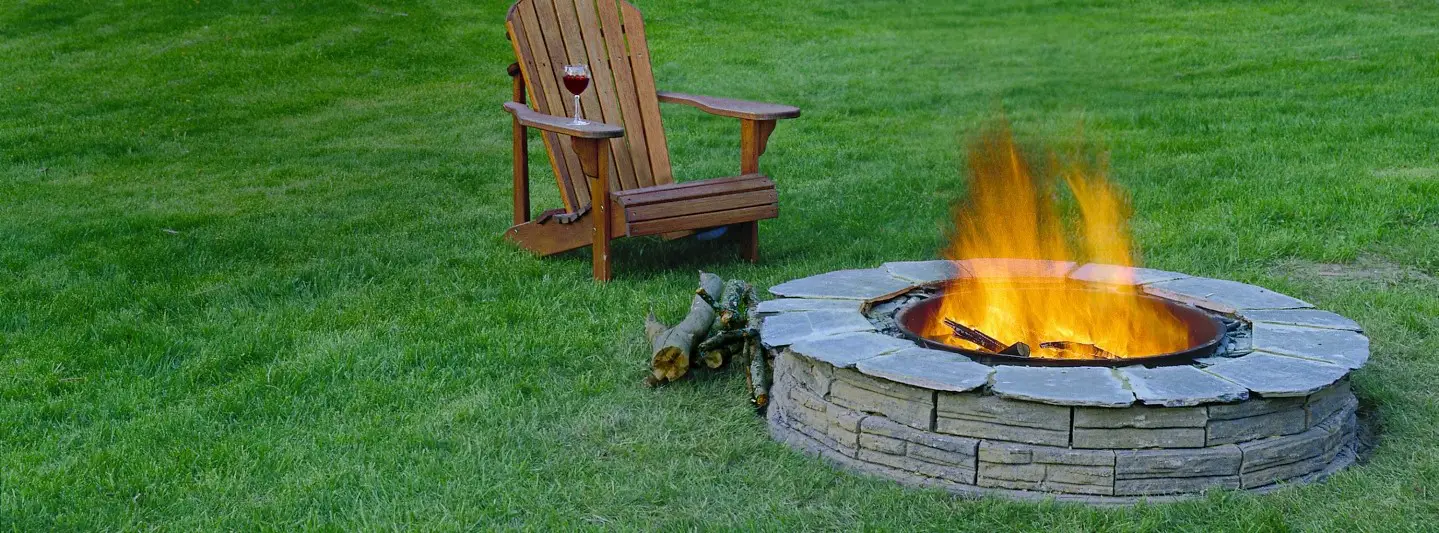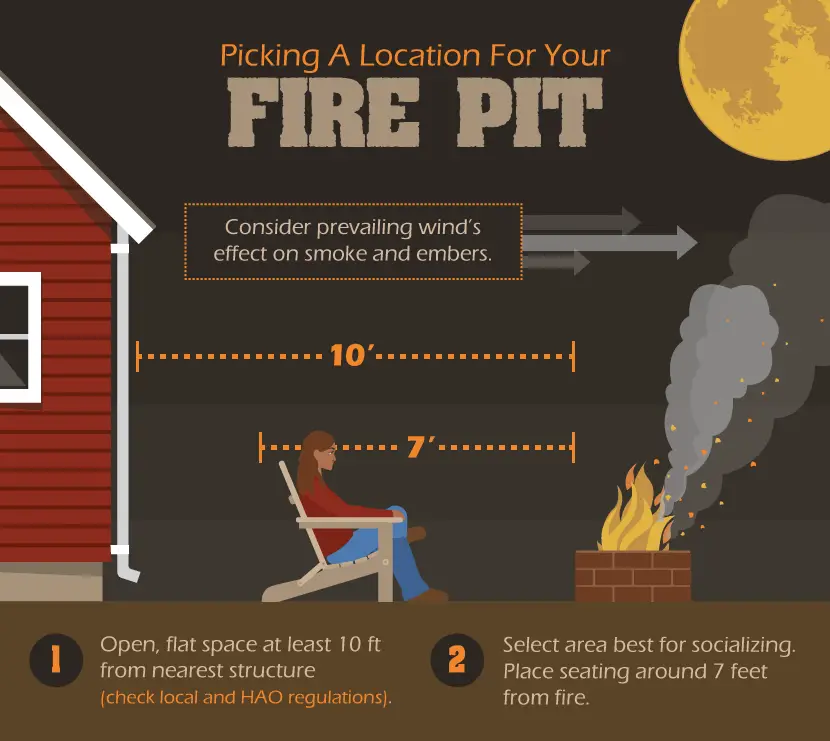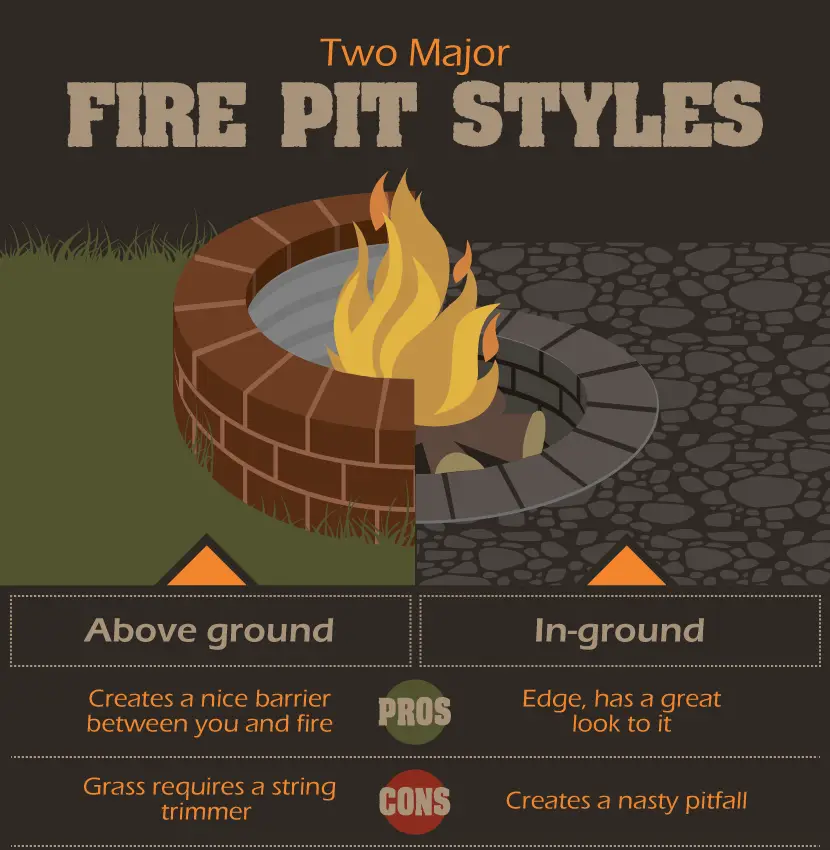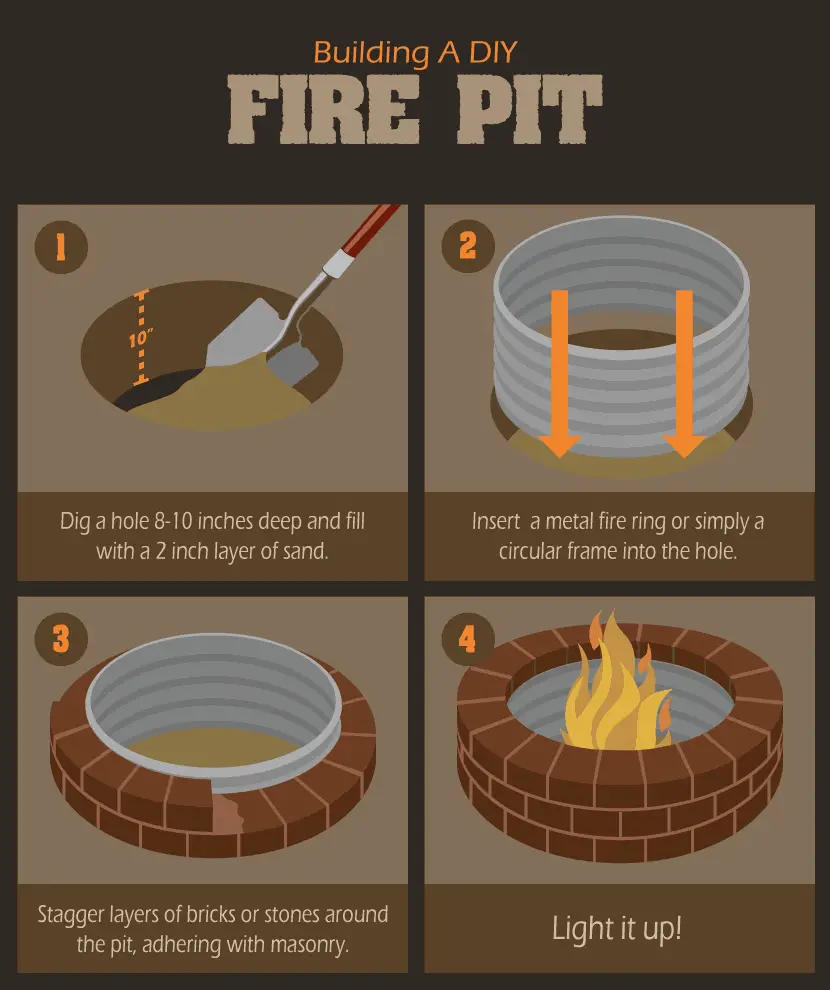By Robin Horton
Guest Writer for Wake Up World
Bringing people together over the warm glow of an outdoor fire is a favored pastime. Sitting around a fire can allow family and friends to join together, and can serve as a self-efficient way of cooking select foods. Building a fire pit of your own is easy, and brings life to your outdoor space. But, to ensure that it is done safely and effectively requires a plan — and this step-by-step do-it-yourself guide from our friends at Fix.com will help you do it.
You’ll need a safe location, and a suitable style for your intended usage. Once you’ve chosen your place and type, you’ll need only limited tools and materials to create your homemade fire pit.
Are you ready to get fired up?
Required tools and materials: Shovel, measuring tape, spray paint (or chalk dusts etc.) to outline the shape, wooden stake, concrete blocks, sand, level, rubber mallet, masonry adhesive and gravel.
1. Have a Plan
What is your particular lifestyle and what kind of experience are you looking to create? Maybe you’d like to designate a social gathering area, making the fire pit the visual or decorative focal point of your outdoor living space. You might want to use the fire pit to warm up chilly evenings and extend your outdoor season. Perhaps you’d like to relive your childhood camp days by roasting hot dogs and making S’mores over the fire. No matter what you decide, you need to have a plan.
2. Pick a Location
Once you’ve determined how you’d like to incorporate a fire pit into your outdoor living plan, the next step is to select its location. Evaluate your space. There’s a fire pit for every space, large or small. If you have a large piece of property, designate a section of land for the fire pit, but make sure to select a safe and convenient location.
Begin by checking your local ordinances or HOA rules for any regulations or limitations. Next, select the area where you’d like to socialize or entertain, and leave at least seven feet all around the fire pit’s location for seating. Make sure to choose a flat space at least ten feet from the nearest structure and plants. Last, consider the direction of the prevailing wind to avoid smoke and embers blowing at you – that would ruin the experience!
3. Choose a Style: Custom, Prefab, or Portable
Fire pits can be permanent – either custom-built, or if you are handy, DIY – or you may opt for a prefabricated, ready-to-install fire pit that will be a permanent fixture. If you have limited space or want to take it with you when you move, a portable fire pit is a good choice. All these options come in many shapes, sizes, materials, and styles. The options are seemingly endless – what you choose will depend on your taste, available space, the location you’ve selected, and your budget.
Fueling the Fire
If you enjoy the scent of burning wood, a wood-burning fire pit is for you. If you are looking for one that is easy to use and clean, you might consider a gas-fueled fire pit. Gas fire pits require you to install a gas line, which makes them more costly and labor-intensive to build, but they offer ease of operation and maintenance. You may choose to light your fire pit with clean biofuel, which comes in self-contained cartridges that do not require a gas line.
Permanent In-ground and Above-ground Fire Pits
Recessed fire pits are typically round, and they provide a natural ambiance with flames rising up out of the ground. They can also be less safe because it’s easier to stumble into them, which is something to consider, especially if young children will be around.
Aboveground fire pits are generally square, rectangular, or round. They can be simple or more elaborate. If you choose to construct a permanent in-ground or aboveground fire pit, use non-combustible materials such as concrete, fire bricks, or landscaping stones, which will withstand extreme temperatures. Insert a forged metal fire ring to contain the fire, and protect the stones from the heat so they don’t dry out and disintegrate over time.
Whether you purchase an aboveground fire pit, custom build one, or go the DIY route, you have many design and materials options from which to choose. Commercially available designs are available in cast-fiber concrete, brushed stainless steel, carbon steel, and other synthetic composites.
Think creatively and multi-functionally. Buy or create a coffee table with an inset fire pit or one with a bench surrounding it for seating. Multitasking designs are great for smaller spaces because they function as both furniture and a fire pit.
Portable Options
Metal fire bowls are available in many sizes. Some have legs, and some can be placed directly on the ground. On the style front, prefab fire pits run the gamut from very traditional to sleek, ultra-contemporary designs. Some fire pits are like sculptures that provide a focal point for your outdoor space.
4. DIY: How to Build a Fire Pit
Are you crafty, with the time to make your own fire pit? Although there are many high-end options, many fire pits are fairly easy to build at a reasonable cost. Try the following directions to build your own fire pit.
Materials for Building a Fire Pit
- Shovel
- Measuring tape
- Spray paint or chalk dust etc., to outline the shape/size
- Wood stake
- Concrete blocks, fire bricks, landscaping stones
- Sand
- Level
- Rubber mallet
- Masonry adhesive
- Gravel
5. Safely Enjoying Your Fire Pit
Remember to put safety first. Install your permanent in-ground or aboveground fire pit on a concrete surface, over pavers, or on bare dirt. Never install or place a fire pit directly on a combustible wood surface or deck.
Fire Safety: To Burn or Not to Burn
If you choose a wood-burning fire pit, you can select from a variety of woods, such as hickory, oak, maple, beech, birch, and elm.
Do not burn painted, stained, treated woods, such as plywood, particleboard, chipboard, or railroad ties, because they emit toxic fumes. Stay away from green wood because it generates extra smoke. Although garden waste and weeds are natural, your city ordinances may prohibit their use. Never use accelerants, such as gasoline or kerosene, household trash, or plastics.
For added safety, consider topping the fire pit with a screen to prevent flying embers; when not in use, a cover will also protect it and keep it clean.
Ready to gather around the fire pit, roast some marshmallows, and tell some tales?
About the author:
Robin Plaskoff Horton is the Founder/Creative Director/Coolspotter of the award-winning and Webby-nominated blog, Urban Gardens – a creative mix of urban style, design, and nature.

If you've ever found value in our articles, we'd greatly appreciate your support by purchasing Mindful Meditation Techniques for Kids - A Practical Guide for Adults to Empower Kids with the Gift of Inner Peace and Resilience for Life.
In the spirit of mindfulness, we encourage you to choose the paperback version. Delve into its pages away from screen glare and notifications, allowing yourself to fully immerse in the transformative practices within. The physical book enriches the learning process and serves as a tangible commitment to mindfulness, easily shared among family and friends.
Over the past few years, Wake Up World has faced significant online censorship, impacting our financial ability to stay online. Instead of soliciting donations, we're exploring win-win solutions with our readers to remain financially viable. Moving into book publishing, we hope to secure ongoing funds to continue our mission. With over 8,500 articles published in the past 13 years, we are committed to keeping our content free and accessible to everyone, without resorting to a paywall.











